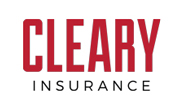Summer Home Improvement Ideas
JD Hostetter – a siding and roofing company in Indianapolis
Decks and patios can add visual interest to your property, while also providing you with an enjoyable living space. Hence, if you’re thinking of building a deck, get in touch with a deck contractor in Denver or anywhere near your house. Sprinkler systems water your lawn evenly and allow you to dictate the timing, which can be handy during water advisories. They also prevent waste and lower water bills; homeowners usually use 50 percent more water on their lawns than necessary. Landscaping is an easy way to improve the look of your property.Exterior Improvements
If your home already has a deck, summer is an ideal time to seal it and repaint or stain it. Sealing the deck helps to preserve the wood and protect it from weather damage while painting or staining it give it a sharp, fresh look. Additionally, you could also install one of those Edmonton deck covers. If money is a concern, contact your local household hazardous waste program – there is often unopened paint available.
Paint, wherever you obtain it, is also handy for painting the exterior of your home. Paint spruces up your home, giving it a fresh, new look; but it also serves a practical function, protecting against moisture and ultraviolet rays.
While you’re eyeing the exterior of your home, consider a couple of other tasks that are much more practical in summer than winter:
Cleaning your eavestroughs and washing/and or replacing your windows.
Eavestroughs should actually be tended twice a year, and they’re not hard to do if you own a ladder. While you’re clearing away the leaves and debris, check for any cracks or leaks.
Often this is the best time to also complete more complex home improvements. Things such as re-tiling your roof and installing or replacing siding can be better completed once the weather has improved as both can sustain damage in bad weather conditions. Potentially speaking to companies such as JD Hostetter – a siding and roofing company in Indianapolis or even local recommendations, you might get from friends can possibly be useful points of contact.
Focus On Your Windows
Looking out the windows at the flowers and greenery makes summer more of a pleasure, so make sure you can enjoy the view by cleaning your windows inside and out. If you choose to do it yourself, there are inexpensive cleaning solutions that give the glass a real sparkle:
A vinegar-water mixture or a few drops of dish soap in warm water.
While you’re washing your outdoor windows, consider applying caulk around the frames. Caulk keeps outdoor air from seeping in through potential cracks, lowering heating and cooling bills. It also prevents water from seeping into your walls to cause mildew and rot.
You can also give your windows a fresh, new look by replacing them. If you’re seeking better insulation or more sunlight, this is the time of year to invest.
Spruce Up The Grounds
Summer is also a good time to consider the shade available on your property and think about whether it’s adequate or not. It’s a perfect moment to plant trees that will provide cover in the future, but if you’re seeking relief from the sun right away, there are options: umbrellas, pergolas or covered porches. There’s no need to suffer in the hot sun if you prefer the shade.
Time For A New Driveway
Summer is the appropriate time to repave your driveway. You can choose asphalt or concrete; asphalt is less prone to cracks. Summer is its season, because asphalt adheres better when it’s warm. With a shiny, new driveway surface, you’re less likely to experience potholes come winter!
Good luck with your projects and if you need insurance advise don’t forget to call your Cleary Insurance Account Executive for help!
